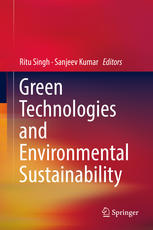

Most ebook files are in PDF format, so you can easily read them using various software such as Foxit Reader or directly on the Google Chrome browser.
Some ebook files are released by publishers in other formats such as .awz, .mobi, .epub, .fb2, etc. You may need to install specific software to read these formats on mobile/PC, such as Calibre.
Please read the tutorial at this link. https://ebooknice.com/page/post?id=faq
We offer FREE conversion to the popular formats you request; however, this may take some time. Therefore, right after payment, please email us, and we will try to provide the service as quickly as possible.
For some exceptional file formats or broken links (if any), please refrain from opening any disputes. Instead, email us first, and we will try to assist within a maximum of 6 hours.
EbookNice Team

Status:
Available0.0
0 reviewsIn the present scenario, green technologies are playing significant role in changing the course of nation’s economic growth towards sustainability and providing an alternative socio-economic model that will enable present and future generations to live in a clean and healthy environment, in harmony with nature. Green technology, which is also known as clean technology, refers to the development and extension of processes, practices, and applications that improve or replace the existing technologies facilitating society to meet their own needs while substantially decreasing the impact of human on the planet, and reducing environmental risks and ecological scarcities. The concepts of Green Technologies, if endorsed and pervaded into the lives of all societies, will facilitate the aim of the Millennium Development Goals of keeping the environment intact and improve it for the civilization to survive. Green Technologies and Environmental Sustainability is focused on the goals of green technologies which are becoming increasingly important for ensuring sustainability. This book provides different perspectives of green technology in sectors like energy, agriculture, waste management and economics and contains recent advancements made towards sustainable development in the field of bioenergy, nanotechnology, green chemistry, bioremediation, degraded land reclamation.
This book is written for a large and broad readership, including researchers, scientists, academicians and readers from diverse backgrounds across various fields such as nanotechnology, chemistry, agriculture, environmental science, water engineering, waste management and energy. It could also serve as a reference book for graduates and post-graduate students, faculties, environmentalist and industrial personnel who are working in the area of green technologies.